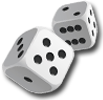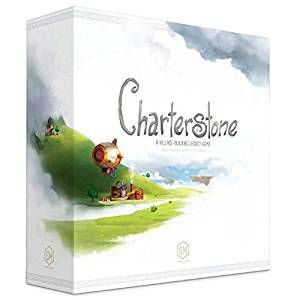



play board games
Board game reviews, strategy tips & session reports
Charterstone Board Game Review
 Stats:
Stats:
No. of players: 1-6
Amount of time to play: 45-75 min
Age requirements: 14+
Set-up time: 5 min
Charterstone is a legacy, worker placement board game. You and your opponents compete to build the most prosperous charter in the village of Greengully.
Charterstone Rules Description:
Charterstone is a legacy game. That means you will be adding new components to the game and board as you play. Winning individual games grants you benefits and boosts your score in the overall campaign which lasts until the twelfth game.
You start the first game with two workers, four coins, your persona and twelve influence tokens. Your persona represents a skill you might have that can help you during the game. From game to game you may only keep a limited amount of these resources.
On your turn you either place a worker on a building and resole its action or recall all your workers. If you have no workers to place you must recall your workers. If you place your worker on a spot with another player’s worker, it is returned to them immediately.
At the start of the game there are five buildings in the center of the board (the Commons) and one building in each player’s charter. The buildings in the Commons let players construct buildings, gain money or advancement cards, open a crate or earn VP from meeting an objective. The starting buildings in your charter grant a worker one resource for free.
Constructed buildings become crates that can be opened to score VPs. They also unlock additional buildings, personas, objectives and other mysteries.
Opening crates, meeting objectives and constructing buildings moves the progress marker. When it reaches the end of the track the game ends. If you win I believe you gain VPs toward the campaign and non-winners get to increase their capacity to keep one type of resource.
Each game has different goals and the player that best meets the goal gets glory. You also get one glory for every ten VPs you score. Each glory lets you fill in one star on your box. Once you fill a row of stars on row box you start the game with the resource in the corresponding row.
After you have played all twelve games the campaign ends. I have not finished all twelve games so I am not sure how the final campaign score is calculated. I plan to write a follow up to this post detailing more things I learn that contains spoilers.
When you have finished the twelve game campaign your board will be set and you can continue to play on it. Or you can buy the recharge pack and play a new campaign from the beginning.
A Quick Review of Charterstone:
Charterstone is a fun and simple worker placement board game. The legacy aspect of the game makes it feel like you are telling a story or revealing the mystery of the setting. I have played this game with my wife and two kids and about half way through we are still enjoying it.
The components for this game are amazing. The meeples and art look great. The resources are shaped like the objects they represent and the coins are metal. Many of the rules are stickers you add to the rulebook as you unlock them. You might even place stickers on top of other stickers so the rules change.
I like the simplicity of the turns and how workers don’t block another player from taking an action. You are helping them but not so much you should avoid bumping their worker.
Also like I said above it feels like a story is being told or a mystery is being revealed as you play the game. You will want to figure out what is going on and might even have a hand in how things unfold (I am not sure).
Some players might be frustrated with certain aspects of Charterstone. Early on you need to make decisions without knowing the full impact they will have. You must be willing to go with the flow. Others might not like how new rules are added as you play, but that is generally how competitive legacy board games go. I have heard some people complain about the balance of the charters, and though we have played with only four, our scores have always been close.
Whether you’ll like Charterstone might depend on how you approach it or what you are expecting. Do you need (or want) all information before you make a decision in games? Are you looking for a super deep and complex village building board game? Then you might want to pass. But if you are ok with some ambiguity (especially in early games) and enjoy seeing a story unfold via playing a board game, I think you’ll enjoy it. I have to say it has been fun playing with my wife and kids even though I have yet to win a game.
Score and synopsis: (Click here for an explanation of these review categories.)
Strategy 4 out of 6
Luck 4 out of 6
Player Interaction 3 out of 6
Replay Value 4 out of 6
Complexity 4 out of 6
Fun 4 out of 6
Overall 4 out of 6

Leave a Reply